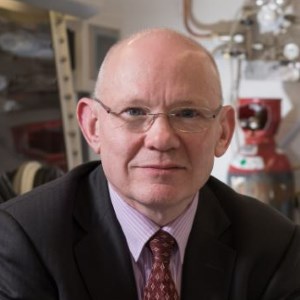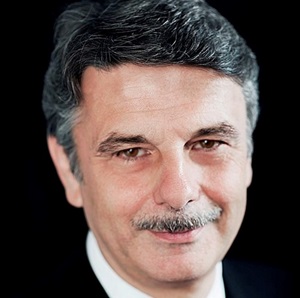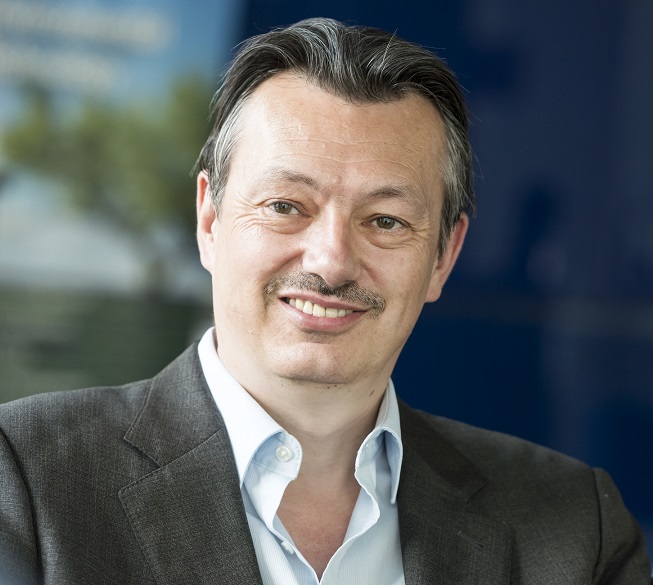Links to external sources may no longer work as intended. The content may not represent the latest thinking in this area or the Society’s current position on the topic.
Energy storage: automotive and grids

Energy is of immense societal importance, pervading all areas life, and high performance energy storage systems will be essential in developing a sustainable future economy. As such, energy storage systems represent a key area of scientific and engineering endeavour now and in the future. There is great potential for next generation technologies to change the way we live and disrupt existing industries, generating new start-up companies and economic opportunities for the UK and elsewhere.
Realising the potential for energy storage systems across all aspects of our modern economy and society requires transformational science and engineering closely allied with industry and government. This conference will look at the fundamental advances necessary to “move the dial” in performance and cost, how breakthroughs are pulled through innovation into commercialisation, and the policy issues related to advancing energy storage for automotive and grids.
Attending this event
This conference aims to bring together national and international leaders in energy storage systems and is intended for participants from across academia, industry and government.
Contact the Industry team for more information.
About the conference series
The conference is part of the Society's Transforming our future conference series, launched to address the major scientific and technical challenges of the next decade and beyond. Each conference will focus on one topic and will seek to cover key issues, including:
- The current state of the key industry sectors involved
- The position of the UK and how it can benefit from the technology
- The future direction of research
- The challenges faced in turning research into commercial success
- The skills base needed to deliver major economic scientific advances
- The wider social and economic impacts
The conferences are a key component of the Society’s five-year Science, Industry and Translation initiative which demonstrates our commitment to reintegrate science and industry at the Society and to promote science and its value by connecting academia, industry and government.
Organisers
Schedule

Professor Alexander Halliday FRS, Physical Secretary and Vice-President, the Royal Society

Professor Alexander Halliday FRS, Physical Secretary and Vice-President, the Royal SocietyAlex Halliday has been Professor of Geochemistry at Oxford University since October 2004. Before coming to Oxford, he spent twelve years as a professor at the University of Michigan and then six years in Switzerland, where he was Head of the Department of Earth Sciences at the ETH in Zürich. His research involves the use of isotopic methods to study Earth and planetary processes. Halliday's research accomplishments have received widespread international recognition. In addition, he is a former President of the Geochemical Society, the European Association of Geochemistry, and the Volcanology, Geochemistry and Petrology Section of the American Geophysical Union. He has experience with a range of top science boards and advisory panels. At Oxford he was Head of the Division of Mathematical, Physical and Life Sciences (science and engineering) from 2007 to 2015. He was elected Vice President (Physical Secretary) of the Royal Society in 2014. |
|
Transport energy storage
The Department of Energy’s Vehicle Technology Office (VTO) funds high-reward/high-risk research conducted by national laboratories, universities, and industry – and attempts to develop low-cost and high-performance automotive batteries necessary for the consumer acceptance of electric vehicles (EV) in the marketplace. In 2017, VTO battery R&D funding approached $100 million. The status of current VTO-funded battery R&D projects will be discussed in this talk and associated R&D issues will be highlighted.. Current battery technology performance is far below its theoretically possible limits and near-term opportunities exist to more than double the battery pack specific energy (250 Wh/kg) and reduce the cost by more than half for lithium-ion technology by using new high-capacity cathode materials, high capacity silicon or intermetallic alloy anodes, or lithium metal battery technology. Further, VTO’s research on extreme fast charging attempts to significantly cut the time that it takes to recharge an EV battery. 
David Howell, Deputy Director, Vehicle Technologies Office, U.S. Department of Energy

David Howell, Deputy Director, Vehicle Technologies Office, U.S. Department of EnergyDave Howell is the Deputy Director of the Office of Vehicle Technologies, U.S. Department of Energy (DOE) Headquarters, in Washington, DC with overall responsibility for VTO’s portfolio of R&D projects. He is currently also the Program Manager for Battery and Electrification Research with direct responsibility of projects on electric drive vehicle batteries, electric drive components, and vehicle charging. He also serves as DOE’s representative at the United States Advanced Battery Consortium Management Committee and at international organizations and inter-government forums involved in hybrid and electric drive transportation. Earlier, Dave was a member of the research staff of the Oak Ridge National Laboratory (ORNL) in Oak Ridge, Tennessee, where he was the Project Manager for Aerospace Technologies. Prior to that, he served on active duty at the Wright Patterson Air Force Base in Ohio where he was the Program Manager for Advanced Materials for Space Structures at the Air Force Materials Laboratory. Dave received a Bachelor of Science degree in Aerospace Engineering from theUniversity of Tennessee at Knoxville. |
|
|
Energy policy approaches and the energy transition
The energy sector is in a period of unprecedented transition, driven by the forces of decarbonisation, decentralisation, and digitalisation. The recent impact of these forces on the sector will be briefly described. With decentralisation and digitalisation, the roles of participants – suppliers, system operators and consumers – will change, as will the way in which transmission and distribution is managed. New market participants will emerge to take advantage of the opportunities provided by the need to ensure greater system flexibility. The consumer will increasingly become an active participant rather than a passive recipient of energy as a commodity. While this disruption will be most evident across the electricity sector, changes driven by the decarbonisation agenda and the march of technology will be felt strongly also in the buildings and transport sectors. Industrial processes will undergo radical transformation. How will energy storage play into all of this? What roles will it play and how quickly will it scale? What policy and regulatory approaches are needed to facilitate the achievement of secure, affordable, and clean energy while incentivising innovation, including in the use of storage? What approaches will best produce an efficiently functioning market with appropriate protection of the consumer? 
Joan MacNaughton, CB, The Climate Group

Joan MacNaughton, CB, The Climate GroupJoan MacNaughton is an influential figure in international energy and climate policy. She is currently Chair of The Climate Group and of the Advisory Board of the New Energy Coalition of Europe. She sits on the Strategic Advisory Board of Engie UK, is a Non -Executive Director of the James Hutton Institute and the Energy Savings Trust, a member of the Council of Warwick University, and sits on several other advisory boards. From 2010 to 2016, Joan was Executive Chair of the annual assessment of countries' energy policies for the World Energy Council, the 'Trilemma', and is now Honorary Chair. In 2012 she was Vice Chair of the UN Committee on the Policy Dialogue of the CDM. From 2006-2012, she served on the Board of Governors, Argonne Laboratory at the University of Chicago where she chaired the Budget Committee; and co-chaired the Strategic review of Laboratory Operations. She has served on many Boards, including the International Emission Trading Association (IETA), of which she is now an honorary Fellow. She is an Honorary Fellow and Past President of the Energy Institute; a Distinguished Fellow of both the Institue of Energy Economics of Japan, and of the Global Federation of Competitiveness Councils. From 2007 to 2013 she was Senior Research Fellow at the Oxford Institute for Energy Studies, and has lectured at the LSE, UCL, Warwick University and many other institutions. For several years she has moderated a roundtable of Ministers and CEO’s at the annual Clean Energy Ministerial Meeting. From 2002, as Director General of Energy, Joan played a key role in shaping UK energy policy. In that role she led a major change programme and made a significant contribution to international energy policy, including overseeing the energy agenda during the UK Presidency of the EU and leading the work on the Clean Energy Action Plan agreed at the G8 Gleneagles Summit. From 2004 to 2006, she was Chair of the Governing Board of the International Energy Agency, leading a review of the IEA’s strategy and leading the emergency response to the supply disruption caused by Hurricane Katrina. In a second career in business, Joan set up and then led Alstom’s department for clean power advocacy from 2007 until 2011, and until December 2012 acted as Global Adviser on Sustainable Policies for the company. She spent six years as a NED of a FTSE 250 property development company. In 2006 she was made a Companion of the Order of the Bath by HM The Queen. She is married to Sir Bill Jeffrey, and is also known as Lady Jeffrey. |
|
Energy storage and the grid

Dr Jorge Pikunic, Managing Director, Distributed Energy and Power, Centrica

Dr Jorge Pikunic, Managing Director, Distributed Energy and Power, CentricaJorge is Managing Director of Centrica’s global Distributed Energy & Power business, established to deliver distributed energy solutions for large energy users as part of a more flexible energy landscape. He joined Centrica in 2010, first heading up the Group’s strategy team before taking over as Managing Director of British Gas’ Smart Metering business, where he lead the roll-out of smart meters to over one million residential customers. Born in Venezuela, Jorge is an engineer and holds a MSc and PhD in Chemical Engineering. He was also a Research Fellow at the University of Oxford before joining McKinsey & Company, where he advised a number of institutions in energy and other sectors. He has also worked for Procter & Gamble and PDVSA (Venezuelan national oil company), and was a Board Director of Smart Energy GB. |
Lab to market

Dr Jeffrey Chamberlain, CEO, Volta Energy Technologies

Dr Jeffrey Chamberlain, CEO, Volta Energy Technologies |
|
Battery storage in the GB power market

Dr Ben Irons, Executive Director, Aurora Energy Research

Dr Ben Irons, Executive Director, Aurora Energy ResearchBen is an Executive Director at Aurora Energy Research where he leads the Commissioned Projects team. His primary focus is on UK power where he advises utilities, developers, financiers and government agencies on topics from strategy to valuation. Ben also leads Aurora’s research into battery storage, peaking plants and demand side response. He has built a market-leading expert team who have acted as market advisers on numerous recent high profile transactions on both buy and sell side, debt and equity, involving thermal, renewable and flexible technologies. Prior to joining Aurora Ben spent 6 years at McKinsey and Company in London consulting on energy and sustainability, followed by 3 years at Centrica Energy as Director of Strategy where he played an active part in investment planning and management of energy assets including thermal and renewable generation, oil, gas and LNG. Ben earned a first class honours degree in Mechanical Engineering in New Zealand, followed by an MPhil and DPhil in Economics from the University of Oxford. |
|
Energy markets regulation

Chris Brown, Head of Core and Emerging Policy, Energy Systems, Ofgem

Chris Brown, Head of Core and Emerging Policy, Energy Systems, OfgemChris leads Ofgem’s work on core and emerging policy, dealing with the state of current market arrangements and any potential barriers to new emerging technologies and business models. This includes the key areas of electric vehicles, energy storage and local energy. Prior to this role, he was head of gas systems at Ofgem leading on gas transmission and distribution policy and representing Ofgem at ACER (Agency for the Cooperation of Energy Regulators) and CEER (Council of European Energy Regulators) on gas issues including interconnectors and storage. Before joining Ofgem in 2016, Chris worked at the Australian Energy Market Operator (AEMO) where he worked in market performance, assessing the role and efficiency of the gas and electricity markets in Australia. He also supervised joint research projects into the potential impact of the developing solar / battery residential market and option value of retiring generation plant. Prior to AEMO, Chris worked in consulting for over 10 years, on a range of projects in the government, energy, transport and telecoms sectors. Chris has qualifications in mathematics, engineering and economics, and is a Chartered Engineer. |
|
|
Energy policy research
Accelerating the development and deployment of energy technologies is a pressing challenge from environmental, economic and security perspectives. Technologies that facilitate reliable and affordable stationary and mobile energy storage have been identified as important components of our future energy system. This talk will first outline the crucial role of public policy fostering innovation in energy technologies, and in particular in energy storage. It will then present research on the role of public funding for R&D energy storage has as part of a portfolio of funding for energy technologies. Finally, the talk will describe what we know about the effectiveness of various types of national-level energy R&D policies involving the private sector. While much of the international academic and policy conversation on energy innovation in the wake of the 2015 COP-21 Paris Agreement has focused on the size of public investments in energy, this talk will conclude with thoughts about ‘how.’ 
Professor Laura Diaz Anadon, Professor of Climate Change Policy, University of Cambridge

Professor Laura Diaz Anadon, Professor of Climate Change Policy, University of CambridgeProfessor Laura Diaz Anadon is Professor of Climate Change Policy at the Department of Land Economy at the University of Cambridge. She is also a Bye-Fellow at Peterhouse and an Associate at the Belfer Center for Science and International Affairs at the Harvard Kennedy School (HKS). Prof. Anadon was previously Assistant Professor of Public Policy at HKS. She has engaged with policy makers in many countries, and contributed to the work of many international organisations (i.e., UN, IEA, UNFCCC, World Bank, OECD). Prof. Anadon did her PhD in chemical engineering at Cambridge, and has industrial research and financial consulting work experience. Her work includes over 40 journal articles (e.g., Nature Energy, PNAS, Nature Climate Change, Environmental Science & Technology, Risk Analysis, Environmental Research Letters, Research Policy, and Energy Economics) and an edited Cambridge University Press book. She has given many plenary lectures and serves in several editorial boards and advisory committees. |

Professor Peter Bruce FRS

Professor Peter Bruce FRSPeter Bruce is Wolfson Professor of Materials at the University of Oxford. His research interests embrace materials chemistry and electrochemistry, with a particular emphasis on energy storage. Recent efforts have focused on the synthesis and understanding of new cathode materials for lithium and sodium ion batteries, understanding processes in all solid-state batteries and the challenges of the lithium-air battery. His pioneering work has provided many advances. Peter has received numerous awards, including the Tilden Prize of the RSC, the Carl Wagner Award of the ECS, the Liversidge Award of the RSC and the Hughes Medal of the RS. He has also been recognised as a Highly Cited Researcher by Clarivate Analytics each year since 2015. Peter is a founder and Chief Scientist of the Faraday Institution, the UK centre for research on electrochemical energy storage. Peter took up the position of Physical Secretary and Vice President of the Royal Society in 2018. |







